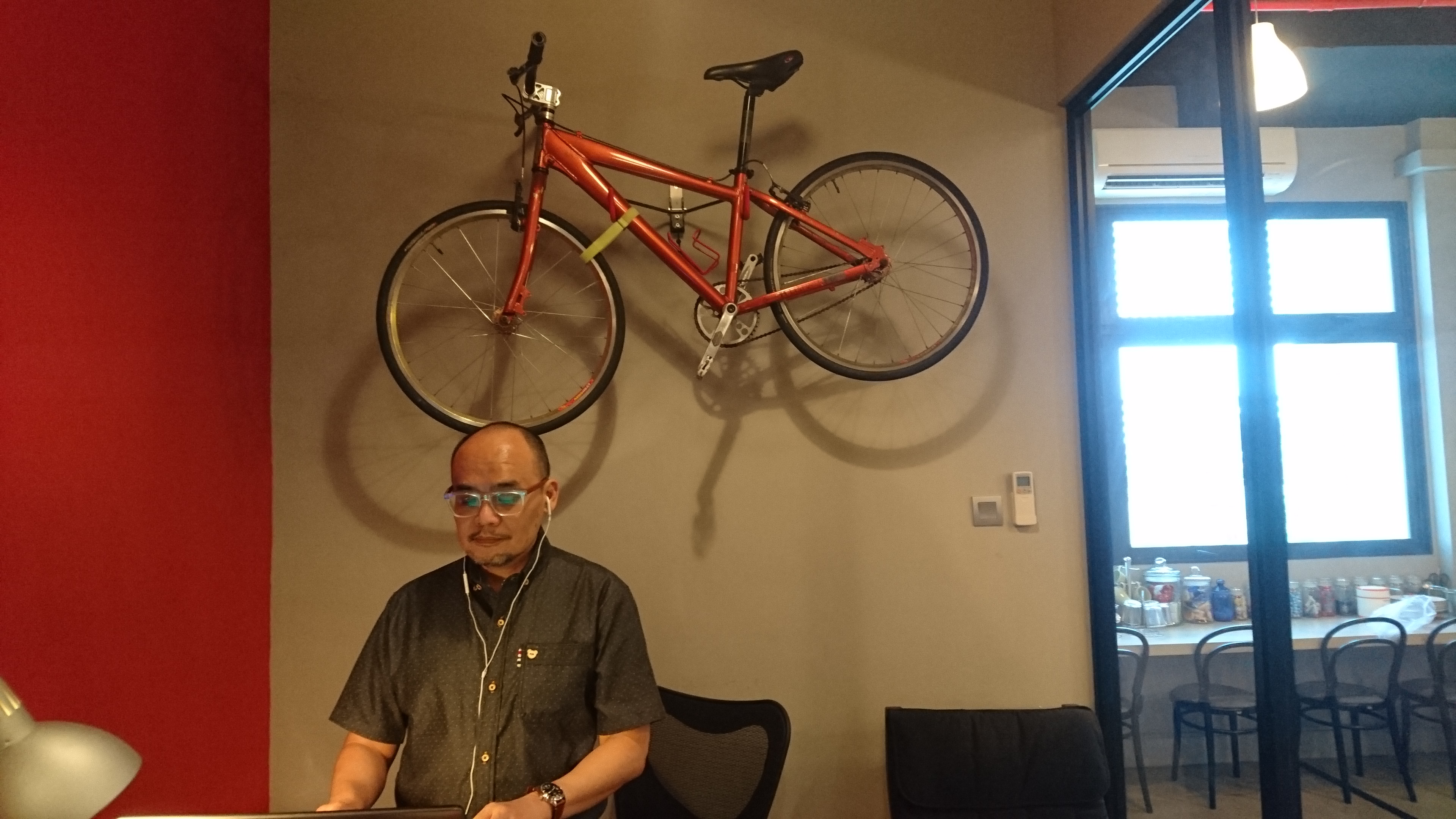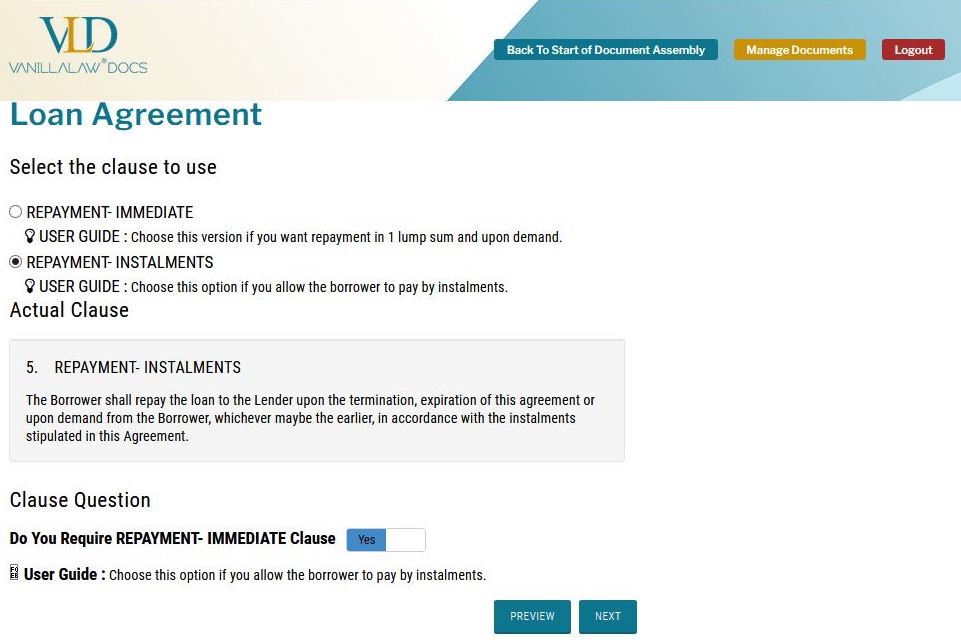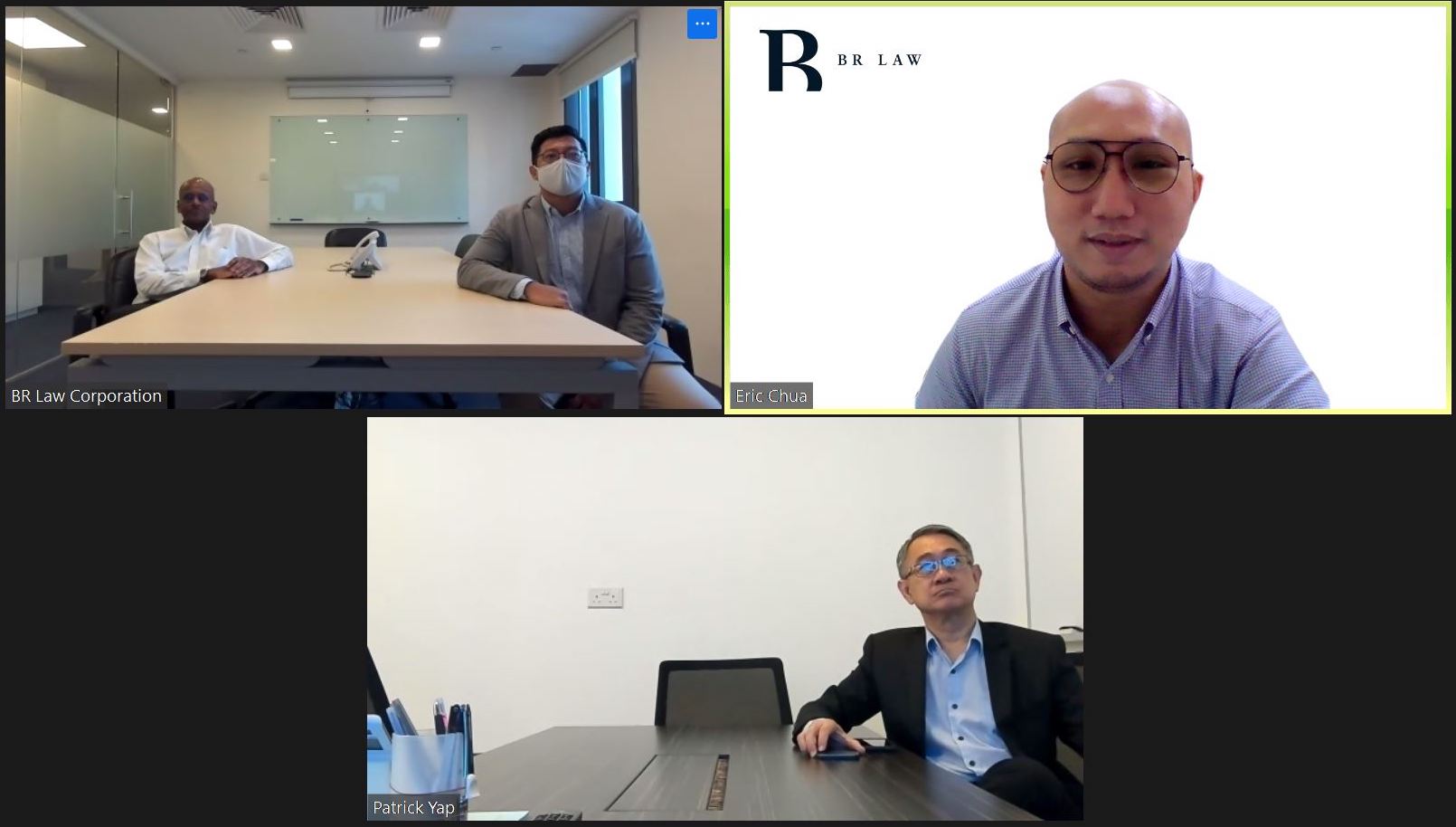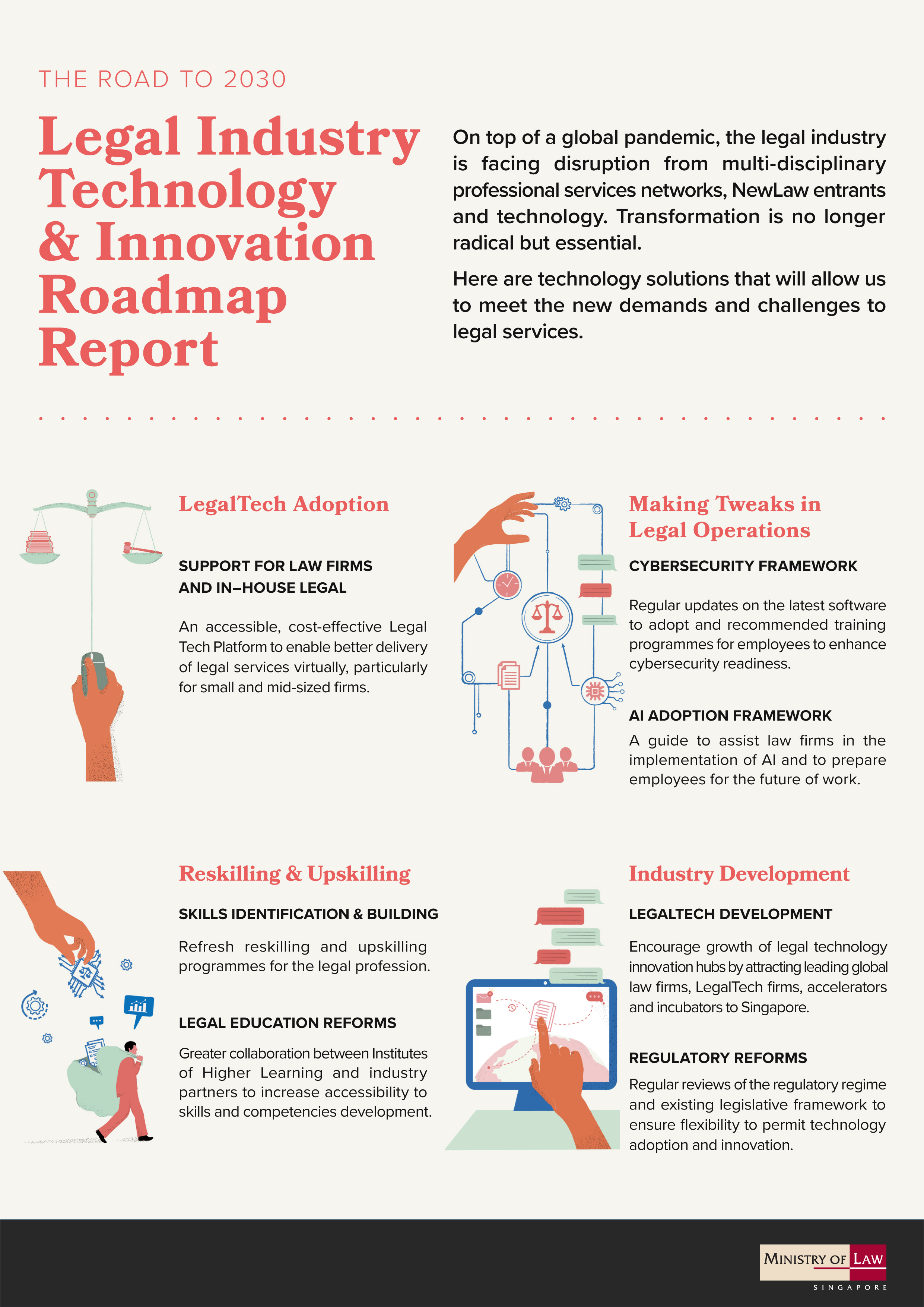The Future is LegalTech
The Future is LegalTech
Insight MinLaw goes behind the scenes to uncover stories about how the work we do impacts you.
On 2 October 2020, MinLaw launched the Technology and Innovation Roadmap, outlining plans to promote innovation, technology adoption and development for the legal sector over the next decade. “The roadmap will guide our direction as we continue working towards strengthening the legal ecosystem in Singapore through technology,” said Chua Xin Juan, Acting Director (Professional Services Programme Office) at MinLaw.
We spoke to three law firms to understand their technology adoption journeys.
 From top: Mark Goh (founder of VanillaLaw LLC), Bazul Ashhab (Managing Partner at Oon & Bazul LLP), and Dharma Sadasivan (Director at BR Law Corporation).
From top: Mark Goh (founder of VanillaLaw LLC), Bazul Ashhab (Managing Partner at Oon & Bazul LLP), and Dharma Sadasivan (Director at BR Law Corporation).
Keeping it Plain and Simple – The Vanilla Way
The early days of VanillaLaw LLC started back in a conservation shophouse in Chinatown when it was still a sole proprietorship. Their small size meant that they had to work with limited resources, and this pushed them to leverage digital tools to scale up their work. Their philosophy on digitalisation? “Be clear about my goals and then find a tool which can help me achieve it as cheaply as possible,” shared Mark Goh, founder of VanillaLaw LLC.
 Mark Goh, founder of VanillaLaw LLC, who is also an avid cyclist.
Mark Goh, founder of VanillaLaw LLC, who is also an avid cyclist.
Ahead of the pack, the firm allowed staff to work from home and conduct their matters online – a full two years before the pandemic. But there were challenges, including strong resistance from their clients when it came to discussing cases online. When COVID-19 struck, firms and clients alike had no choice but to pivot online – a validation of VanillaLaw’s business and operating model.
Over the years, the firm has transformed itself into a digital legal practice with technology at the core of everything they do. This also meant taking an extra step in developing their own in-house proprietary document assembly software, VanillaLaw® Docs. A brainchild of Mark’s, the software was borne out of his perennial struggle with physical repositories of templates and precedents. Since Mark could not find any software on the market that met his expectations, he decided to develop one in-house. Today, VanillaLaw® Docs helps interns and junior lawyers to create the first drafts of various types of legal documents with an accuracy rate of up to 70%.
 An example of document assembly on VanillaLaw® Docs.
An example of document assembly on VanillaLaw® Docs.
In addition to going largely digital, the firm has also adopted “holocracy”, a novel organisational structure to replace conventional management hierarchies. Under this system, interns are given more autonomy to carry out and deliver their work, which in turn enables the firm to better assess their abilities before awarding training contracts – this is the primary way the firm hires young lawyers.
When asked about the productivity gains that technology has brought to his firm, Mark quipped: “I do not quantify the benefits of technology in this manner. The only quantification for me is that I get to earn the same but have more free time for myself to do the things I enjoy and catch up on sleep.”
Oon-wards with Technology
When Singapore entered the circuit breaker period last year, business continuity across most industry sectors were affected as overnight, telecommuting became the only mode of operation – but not for Oon & Bazul LLP. Disruption was kept to a minimum thanks to their technology-focused business continuity plan, which included simulations of various scenarios including a complete shutdown due to a terrorist attack.
As the law firm had always placed technology at the core of its growth philosophy, this allowed them to better navigate the challenges posed by the pandemic. In fact, for some segments of practice, the firm’s productivity went up and billings increased even when travel restrictions kicked in. They were able to meet with clients more frequently via virtual meetings – across different time zones – and receive instructions faster as compared to traditional face-to-face meetings.
 Bazul Ashhab (presenting), Managing Partner at Oon & Bazul LLP, at an internal meeting with employees pre-COVID-19.
Bazul Ashhab (presenting), Managing Partner at Oon & Bazul LLP, at an internal meeting with employees pre-COVID-19.
“Technology will continue to evolve. One needs to be laser-focused when it comes to technology or risk being annihilated in a dynamic and competitive environment,” noted Bazul Ashhab, Managing Partner at Oon & Bazul LLP.
The firm leveraged the Tech-celerate for Law initiative to procure software such as Tessaract.io, an end-to-end collaborative practice management software. Apart from Tessaract.io, the firm also adopted the productivity tool Clarilis, a document automation platform that helps lawyers and corporate counsel with the drafting process for all forms of legal documentation.
 Bazul Ashhab, Managing Partner at Oon & Bazul LLP.
Bazul Ashhab, Managing Partner at Oon & Bazul LLP.
The success recipe for the firm was a combination of a bottom-up approach involving staff across all levels, formulation of a comprehensive technology learning and development plan for all employees, as well as regular investments in technology. “I will not make a decision until I have heard from every business segment, including non-lawyers,” said Bazul, emphasizing the firm’s senior management’s belief in adopting a consultative approach.
Out with the Old, In with the New
Uprooting legacy systems and processes that have served companies well for over three decades might be daunting for most, but 35-year-old law practice BR Law Corporation defied the odds to emerge as a stronger outfit. When the firm decided to upgrade its technology infrastructure in 2017, it did not expect to break the mould and transcend what most traditional law firms would have done.
“There will always be a fair level of inertia in technology adoption, especially when there are legacy systems in place that has served the firm well for years,” shared Dharma Sadasivan, Director at BR Law Corporation.
 Dharma Sadasivan (right), Director at BR Law Corporation, with a colleague in a photo taken pre-COVID-19.
Dharma Sadasivan (right), Director at BR Law Corporation, with a colleague in a photo taken pre-COVID-19.
To navigate the potential challenges of adoption, Dharma paid close attention to the user interface and user experience (UI/UX) as key considerations when mapping out the firm’s technology refresh roadmap. As commercial solutions available back then did not meet BR Law’s needs, the law firm decided to embark on a custom-built solution.
Their new Legal Practice Management (LPM) system took more than a year to develop due to the firm’s emphasis on UI/UX. This was reflected in efforts to engage users from various practice areas and departments for feedback at different stages, and on their specific work processes. The result of their efforts was a custom-built, cloud-based LPM system that enabled the firm to be more data-driven in making decisions.
While travel restrictions have made it challenging to physically meet prospective clients and partners based overseas, technology has empowered BR Law to extend their outreach. With video conferencing as the ‘new normal’, they were able to reach over 300 attendees in a single webinar, which was more than ten times the typical turnout of physical seminars.
 A video conference with staff across BR Law’s offices and who are telecommuting.
A video conference with staff across BR Law’s offices and who are telecommuting.
The firm is not resting on its laurels as they continue their technology journey. What’s next? A cloud-based phone system that allows users to make, receive, and transfer office calls using their DIDs via a mobile application – all this while they continue to explore other technology tools to improve their processes, work flexibility and business resilience.
MinLaw’s Ms Chua said the pandemic gave the legal industry a timely digital push. She noted: “As we pivot to new opportunities with technology, it is inevitable that we will face challenges along the way. However, I am certain that the legal industry will emerge stronger and further strengthen Singapore’s position as a leading international legal services hub.”

About the Technology and Innovation Roadmap
The Technology and Innovation Roadmap highlights key trends that industry players should be aware of in deciding how best to forge ahead amidst a time of disruption and uncertainty. It also builds on existing initiatives that support industry players in their technology adoption and development efforts.
Last updated on 5 May 2021
Other stories you may like:

